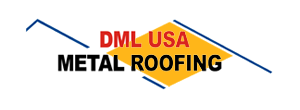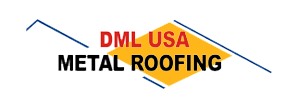Metal roof installation mistakes can significantly impact the long-term performance and appearance of your home. Whether it’s selecting the wrong panel or misaligning fasteners, these errors can lead to costly repairs and maintenance headaches. Here’s a quick look at the most common metal roof installation mistakes you should be aware of to ensure your new roof lasts for decades:
- Choosing the wrong metal roofing panel
- Incorrectly installing fasteners
- Using the wrong underlayment
- Failing to plan properly
- Misaligned screws
Today, metal roofing is more popular than ever due to its durability, energy efficiency, and modern aesthetic. However, achieving these benefits depends on avoiding common mistakes during installation. While the allure of a sleek, durable roof is strong, installation involves challenges that require expertise and precision.
I’m Adam Kadziola, and with my years of experience in metal roofing, I’ve seen how metal roof installation mistakes can be avoided with proper guidance. Don’t let these pitfalls prevent you from reaping the full benefits of a metal roof.

Common Metal Roof Installation Mistakes
When it comes to installing a metal roof, precision is key. Even small errors can lead to big problems down the line. Let’s explore some of the most common mistakes and how to avoid them:
1. Incorrect Measurements
One of the most frequent errors is incorrect measurements. Ordering panels that are too long or too short can delay your project and increase costs. Always conduct a field measurement before ordering panels. Avoid relying on blueprints or estimations for a structure that isn’t fully built. Using a roofing calculator can help ensure accuracy.
2. Choosing the Wrong Metal Roofing Panel
Not all panels are created equal. Selecting the wrong type for your roof’s pitch can lead to issues like leaks or even the roof lifting during storms. For roofs with a pitch of less than 3” in 12”, a standing seam panel is often the best choice. For steeper roofs, options like ⅞” Corrugated or Western Rib panels are suitable.
3. Fastener Issues
Improperly installed fasteners are a leading cause of leaks. Fasteners should be neither too tight nor too loose. If the washer is visible or off-center, it’s overtightened. If the gasket isn’t compressed, it’s under-tightened. Always ensure screws are perpendicular to the panel to maintain a good seal.

4. Oil Canning
Oil canning, or the visible waviness in flat metal panels, is a common aesthetic issue. While not a structural problem, it can be unsightly. This can often be minimized by using panels with stiffening ribs or striations. Properly placed clips and correct fastener tension also help reduce oil canning.
5. Underlayment Errors
The underlayment is your roof’s first line of defense against moisture. Using the wrong type or installing it incorrectly can lead to water infiltration and reduced roof lifespan. Invest in quality underlayment and ensure it’s installed properly to protect your investment.
6. Sealant Problems
Sealants are crucial for preventing leaks, especially at joints and seams. Using the wrong type or applying it incorrectly can lead to water damage. Always use a sealant compatible with your metal roofing system and follow manufacturer guidelines for application.
7. Flashing Mistakes
Flashing is vital for directing water away from critical areas like chimneys and skylights. Improperly attached flashing can cause leaks and structural damage. Ensure flashing is securely attached and sealed to prevent water intrusion.
8. Lack of Experience
Metal roofing requires a different skill set than traditional roofing. Inexperienced installers may make mistakes that compromise the roof’s integrity. Always hire professionals with specific experience in metal roofing to ensure a quality installation.
Avoid these metal roof installation mistakes to ensure that your roof is both functional and long-lasting. With careful planning and execution, you can enjoy the many benefits of a metal roof without the headaches of common pitfalls.
Next, we’ll explore the top mistakes to avoid when switching from asphalt to metal roofing.
Top Mistakes to Avoid When Switching from Asphalt to Metal Roofing
Switching from asphalt to metal roofing is not just about changing materials—it’s about embracing a whole new approach. Here are the key areas where mistakes often happen and how to avoid them:
Skillset Differences
Metal roofing is not shingle roofing. The skills required are different, and assuming otherwise is a common mistake. While shingles are relatively straightforward, metal roofing demands precision and expertise.
Exposed fastener systems, for example, are easier to install but still require knowledge of metal-specific techniques. Standing seam systems are more complex, needing careful alignment and seaming. It’s crucial to invest in training and hire experienced installers to avoid costly errors.
Material Handling
Handling metal is not the same as handling asphalt shingles. Metal panels can be heavy, sharp, and prone to damage if not handled correctly. Improper handling can lead to dents and scratches, compromising both appearance and performance.
Always use the right tools and techniques when moving and installing metal roofing materials. This includes wearing gloves to prevent injury and using pads or soft materials to protect panels during transport and installation.
Product Knowledge
Understanding the products you’re working with is essential. Metal roofing comes in various types, each with its own set of characteristics and installation requirements. Choosing the wrong panel type can lead to leaks and structural issues.
For instance, a standing seam roof is ideal for low-slope applications, but requires precise installation to ensure weather-tightness. Ensure you know the specifications and suitability of each product to avoid these metal roof installation mistakes.
Scaling Challenges
Scaling up from asphalt to metal roofing can be daunting. Metal roofing requires careful planning and precise execution. Without proper planning, you might face delays and increased costs.
Creating a detailed project plan is key. Anticipate potential obstacles, schedule labor efficiently, and ensure all materials are ready on-site. This preparation will save time and money, and reduce the risk of mistakes during installation.
By understanding these challenges and preparing accordingly, you can make a successful transition to metal roofing. Up next, we will discuss how to prevent metal roof leaks with regular maintenance and inspections.
How to Prevent Metal Roof Leaks
Preventing leaks in your metal roof is all about regular maintenance and smart practices. By following a few simple steps, you can extend the life of your roof and avoid costly repairs.
Regular Inspections
Scheduling bi-annual inspections is essential. A professional can spot potential issues like wear, rust, or loose fasteners before they become major problems. Catching these early can save you a lot of hassle and money down the line.
Proper Sealant Use
Sealants are your roof’s first line of defense against the elements. It’s crucial to check sealants around flashings, vents, and other roof penetrations regularly. If you notice any worn or cracked sealants, replace them immediately. Always use a sealant specifically designed for metal roofs to ensure proper adhesion and flexibility.
Debris Removal
Leaves, branches, and other debris can trap moisture and lead to rust. Make it a habit to clear your roof of debris regularly. This simple step can prevent moisture buildup and prolong the life of your roof.
Maintenance Tips
Clean Gutters and Downspouts: Clogged gutters can cause water to pool on your roof, leading to leaks. Ensure they’re clear to allow water to flow freely.
Trim Overhanging Branches: Branches that hang over your roof can fall and cause damage. Regular trimming can prevent this and reduce the risk of debris accumulation.
Check for Mis-aligned Screws: A screw that goes in crooked can compromise the seal. Ensure each screw is perpendicular to the panel during installation.
By integrating these practices into your routine, you can effectively prevent leaks and keep your metal roof in top shape. Next, we’ll answer some frequently asked questions about metal roof installation mistakes and how to address them effectively.
Frequently Asked Questions about Metal Roof Installation Mistakes
What is the biggest problem with metal roofs?
One of the most common concerns with metal roofs is condensation issues. When warm, moist air from inside a building rises and meets the cooler metal roofing, it can cause condensation to form. Over time, this moisture can lead to mold, mildew, and even structural damage if not addressed properly.
To combat this, using furring strips can be highly effective. These strips create a space between the metal roof and the underlying structure, allowing air to circulate and moisture to evaporate. Proper ventilation and insulation are also key to mitigating condensation problems.
How can improper fastener installation affect a metal roof?
Improper fastener installation is a leading cause of leaks in metal roofing systems. Fasteners must be installed correctly to ensure a tight seal. If they are overdriven, underdriven, or installed at an angle, they can leave gaps for water to seep through.

There are various fastener types custom for metal roofs, such as exposed and concealed fasteners. Using the wrong type can compromise the roof’s integrity. For instance, concealed fasteners provide a cleaner look and better protection against the elements, but they require more precise installation techniques.
Why is flashing important in metal roof installations?
Flashing is crucial for water protection in metal roof installations. It acts as a barrier that directs water away from critical areas like joints, edges, and roof penetrations. Without proper flashing, water can easily find its way into the building, leading to leaks and potential damage.
Installation errors with flashing can result in significant problems. If flashing is not properly aligned or sealed, it can allow water to penetrate the roof structure. This is why meticulous attention to detail during installation is essential. Ensuring that flashing is correctly installed and regularly inspected can prevent costly repairs and extend the life of your metal roof.
By understanding these metal roof installation mistakes and how to address them, you can maintain a durable and leak-free roof. Next, we will explore the benefits of choosing DML USA Metal Roofing for your roofing needs.
Conclusion
Choosing the right roofing material is crucial for your home’s longevity and performance. At DML USA Metal Roofing, we pride ourselves on offering high-quality products that stand the test of time. Our metal roofing systems are not only durable but also designed to be maintenance-free, giving you peace of mind for decades.
One of the standout benefits of our metal roofing is its energy efficiency. Reflective metal roofing can save you up to 40% in summer cooling costs. This means you can enjoy a comfortable home environment while saving money on energy bills. Plus, our roofs come with energy tax credits, further enhancing your savings.
Durability is another key advantage of choosing DML USA Metal Roofing. Our products are highly resistant to extreme weather conditions, including high winds, heavy snow, and even wildfires. With a wind rating of up to 120 mph and a Class A fire rating, our roofs provide a strong defense against the elements. This durability also translates to an increase in home value, making it a smart investment for homeowners.
We believe in providing affordable solutions without compromising on quality. Our roofs are lightweight yet incredibly strong, reducing stress on your home’s structure. And with a 50-year warranty, you can trust that your investment is protected.
For more information on our products and how they can benefit your home, visit our DML USA Metal Roofing Products page. Let us help you make the best choice for a roof that will last a lifetime.
By choosing DML USA Metal Roofing, you’re not just investing in a roof—you’re investing in peace of mind and long-term savings.

